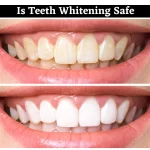Dental sealants are thin coatings of plastic resin that are placed on the chewing surface of teeth to protect them from cavities. Also known as pit-and-fissure sealants, they are often considered an essential preventive measure in people who are prone to tooth decay.
The chewing surface of the back teeth – molars and premolars – has grooves and fissures that constantly collect food particles and plaque. In spite of regular brushing and flossing, these are the regions of teeth that are most susceptible to developing cavities. Dental sealants bond to these surfaces of the teeth and make them smooth and resistant to decay.
Who Can Get Dental Sealants?
Children and adolescents are considered the chief candidates for receiving dental sealants since they have a greater likelihood of developing cavities in the pits and fissures of their posterior teeth. However, adults who are at risk of developing frequent cavities can get the dental sealant procedure done too.
Ideally, children should get the sealant procedure done as soon as their permanent molars and premolars erupt, which starts at around age 6. The dental sealant can help protect their teeth between the cavity-prone ages of 6 to 14 years.
Procedure for Dental Sealant Application
The dental sealant application is a simple and painless procedure that requires just a few minutes for each tooth. The sealant procedure for an entire set of molars can be completed in a single appointment. Your dentist will follow these steps for a dental sealant procedure:
- The tooth that will receive the sealant is first thoroughly cleaned and dried. The cleaning may be done with a prophylactic paste if your dentist feels the requirement to do so.
- If there is any sign of even slight tooth decay on the chewing surface of your molars, it is removed, cleaned and dried.
- Next, an etching process is done on the dried tooth. This etchant is an acidic gel that is placed for a few seconds on the fissures of the chewing surface of the tooth, then rinsed off with water and dried. The acid etchant roughens up the surface of the tooth and creates microscopic areas that help the sealant bond better to the tooth.
- Once the tooth is clean and dry again, your dentist will now paint the sealant on the fissures and grooves of the tooth and harden it with a curing light. The sealant bonds to the tooth surface and takes on the appearance of a simple varnish coating.
How Long Do Dental Sealants Last?
Dental sealants are known to protect teeth against decay for almost a decade before they might need to be replaced. Routine actions like chewing and biting do cause dental sealants to wear away gradually. It is advisable to be in the habit of going for regular dental check-ups; in this way, your dentist can look for any form wearing or chipping of your sealant and replace them if deemed necessary.
Dental Sealants VS Cavity Fillings
Fillings are done on teeth that have already been affected by decay, whereas dental sealants are applied on teeth to protect them from decay. While fillings may help cavities from spreading and destroying the entire tooth, they also tend to make teeth weaker. Dental sealants can be applied in a very short time and even cost much less than fillings.
Feel free to bring your kids to Minneapolis Dental to learn more about the dental sealant procedure and how we can help protect your child’s teeth from cavities.


















